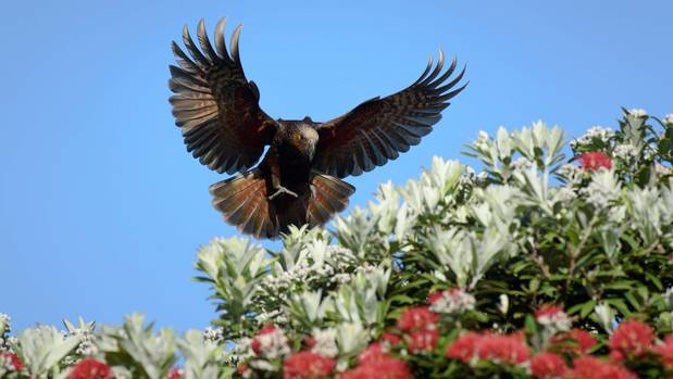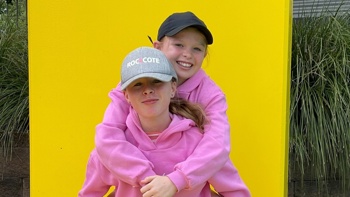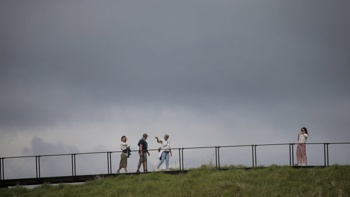
When Māori arrived on New Zealand's shores 800 years ago, it marked the end to millions of years of peaceful isolation in which our human- and pest-free environment had thrived.
But even at the dawn of settlement here - centuries before Europeans and introduced pests began a wholesale transformation of our natural landscape - what was being lost wasn't going unnoticed.
That's been revealed by a first-of-its-kind study which combined ecology, linguistics, computational biology and mātauranga Māori (knowledge) to shed light on some of the first references to biodiversity decline.
A team of researchers uncovered these by searching early Māori whakataukī, or ancestral sayings, that have been preserved by anthropologists.
Their analysis showed that early recognition was mostly spurred by losses of critical food species such as moa, which was hunted to extinction within two centuries.
But more importantly, the insights emphasised that Māori closely observed - and mourned - changes in their environment.
The researchers say their findings are just as relevant today, at a time 1000 native species are close to the brink.
"Aotearoa is famous for its large number of extinctions and we wanted to try to unravel how people perceived, and responded to, those extinctions," said Dr Cilla Wehi, a conservation biologist at Manaaki Whenua – Landcare Research.
"Ultimately the question is: how do we, as humans, perceive extinction risk and how do we react to that? Can we act in a timely way?"
What was clear was that close observation of the environment is an important precursor to action - and that people observed and mourned the loss of species like moa.
"We always wondered what our ancestors thought about the extinction of moa," said Wehi, who teamed up with associate professors Hēmi Whaanga and Tom Roa, of Waikato University's Faculty of Māori and Indigenous Studies, and Massey University's Professor Murray Cox.
"When we try and fail to look after our relatives in the natural world, what did we learn from that and how was that information passed from generation to generation?"
The team turned to a collection of whakataukī published in the 1980s by Sir Hirini Moko Mead and Neil Grove, and which included many examples first recorded in the mid 19th century by ethnographers such as Sir George Grey and Elsdon Best.
The researchers searched for references to animals of any kind, and then discussed and analysed each one in turn, looking at the language features and meaning.
They also looked at overall patterns, such as which birds appeared most often, and whether this was related to their size.
Trying to date the whakataukī proved a challenge.
"We started by thinking of language as DNA, where language changes were like heritable mutations that we could track to see how ideas changed through time," Wehi said.
"Because we were working with a relatively small sample size, this was a bit frustrating and rather inconclusive."
The researchers then decided to take a broader approach, threading together a range of different sources of knowledge.
"We had to align language cues, word use and vocabulary history, names and events, whakapapa, and old and modern usages of words to approximate the date that each whakataukī was first used," Whaanga explained.
"We wanted to do this so we could see how people's thinking and observations changed through time, and how extinction events and knowledge about those events entered this form of oral tradition."
The team were heartened to find that much-referenced bird species matched up with those whose remains were commonly found at ancient middens - or sites where waste was dumped.
That indicated Māori likely spoke often about noticeable species, that were large, and important from a food point of view.
"But it's the exceptions to this pattern that are really interesting," Cox said.
For example, white herons (kōtuku) and kākā were compared to chiefs, while moa were often used as a device for loss.
"All the birds that are missing from the whakataukī raised a flag for us."
Closer analysis indicated the whakataukī showed language loss and knowledge about species was often related to their extinction.
Species that went extinct early after human arrival were mentioned rarely, or not at all, in the whakataukī that has been preserved today - and this was true even for the largest of extinct species, like the native goose.
Yet that wasn't the case with moa, whose demise became a symbol of extinction.
Roa noted that when Māori culture and people grew under severe threat in the 19th Century, whakataukī of the time referred back to the disappearance of moa.
Ultimately, the research team said their study was about values, how we enacted them, and how we sometimes failed.
By learning as much as possible from the past, they said, we could create a "blueprint" for saving what species we had left.
More than 80 per cent of our native birds, three quarters of our freshwater fish and marine invertebrates, nearly 90 per cent of reptiles and more than a third of our vascular plants are all considered either threatened or near extinct.
They pointed to the words of Mead, who remarked how the advice of ancestors was as valuable today as it was hundreds of years ago.
"It is a rare privilege to be able to reach out to the ancestors and touch their minds," the renowned writer and anthropologist once said.
"We get an indication of what they valued and what they considered to be good."
Take your Radio, Podcasts and Music with you









